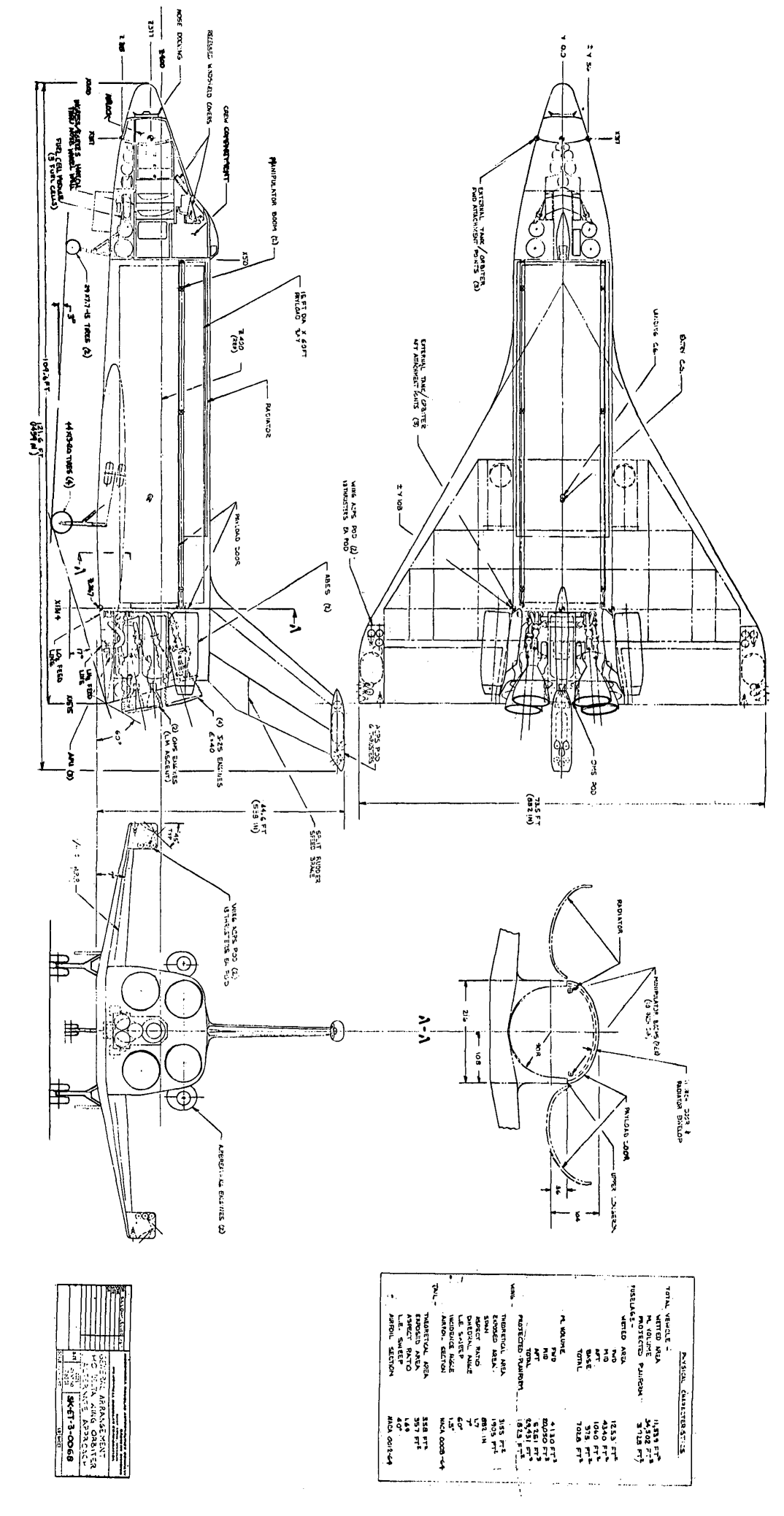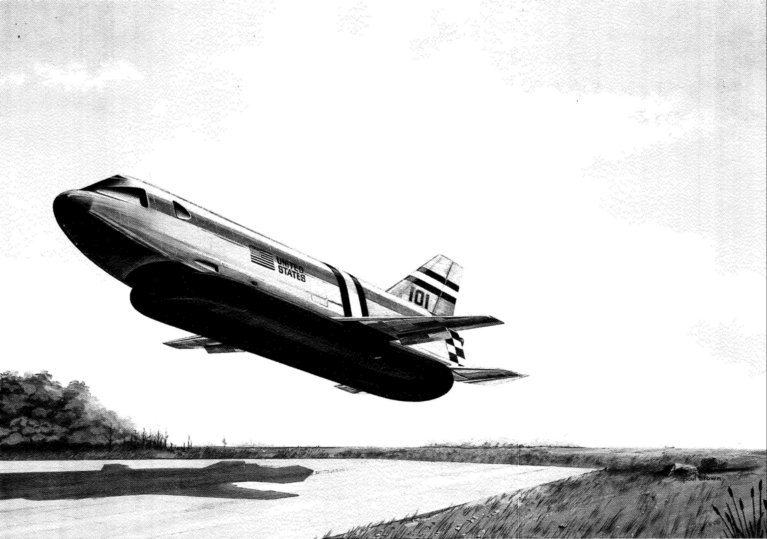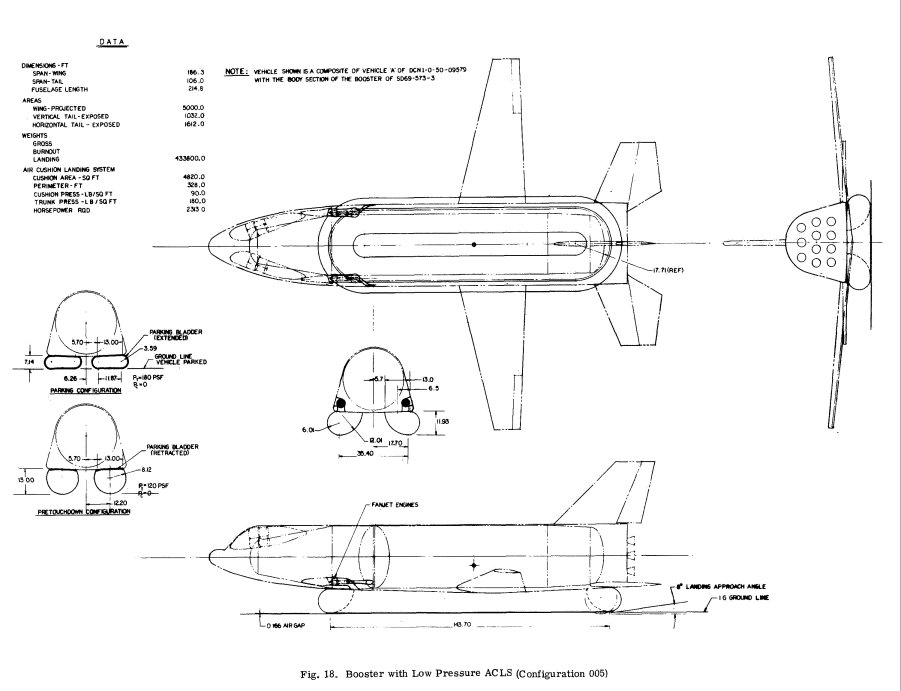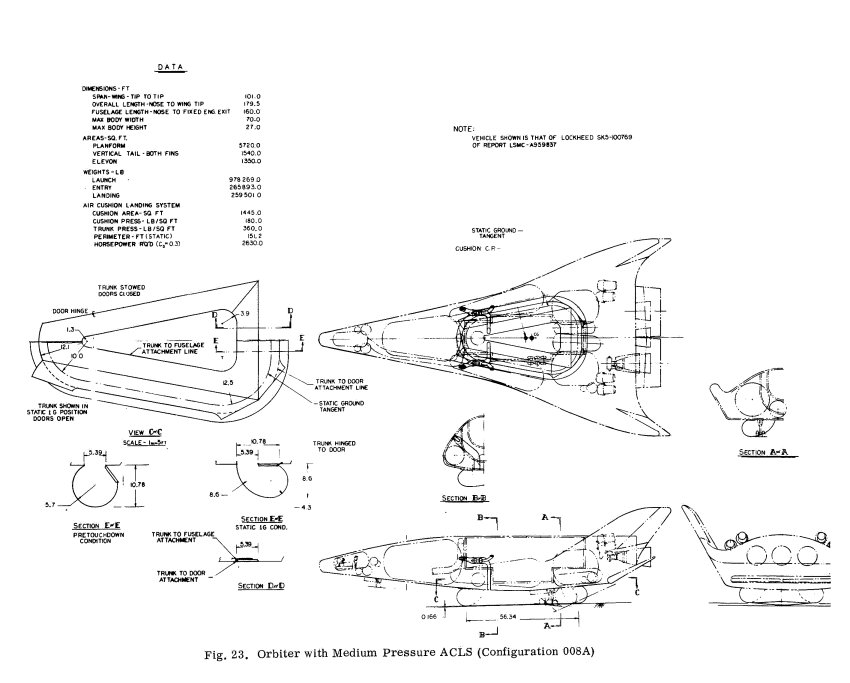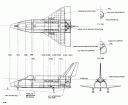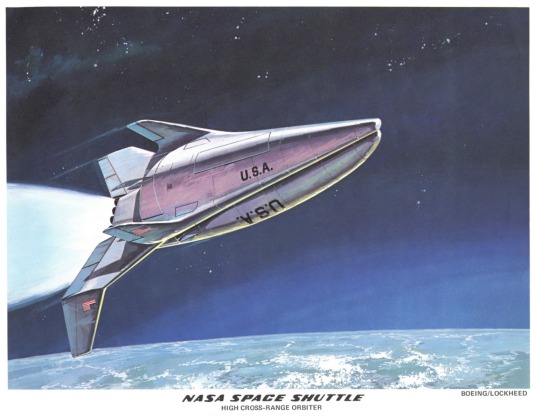Taken from the same brief presentation as this twin-fuselage C-5, this is a notional concept for much the same thing but using 747 components. Clearly it was not designed to any great level of detail. It would have required a vast level of redesign of the 747 as compared to the twin-C-5. Moving wings from the bottom of a fuselage to the top ain’t exactly a trivial operation.
Search Results : shuttle
Taken from a NASA briefing is a drawing showing a twin-fuselage C-5 transport plane designed to carry the Space Shuttle Orbiter. Advantages of doing it this way – rather than using a more-or-less standard 747 – include easier mating (simply tow the Shuttle underneath, no giant cranes needed) and safer drop testing… just drop it. Additionally, much more “stuff” could be carried by the aircraft.
Disadvantages would include a far more extensive modification and qualification program, as well as limitations regarding runway width.
Based on the generic NASA 040 configuration. This was clearly getting close to the final Orbiter configuration as actually built, but differed in several important respects… wingtip RCS units, 4 J-2S engines (rather than 3 SSMEs), a raised cupola over the cockpit, two manipulator arms, a docking adapter in the nose, two turbojets.
In 1970, Bell Aerospace Company delivered a report to NASA on using air cushing landing systems (ACLS) on the Space Shuttle system. These were the important parts of hovercraft – the skirts, the blowers, etc – packaged to fit in the underside of the Shuttle Orbiter and Booster. At the time the Shuttle Booster was expected to be a manned flyback vehicle, returning to a runway landing. The
The ACLS was expected to offer several advantages over conventional gear:
1)Lower weight
2) Distributed, rather than point, loads
3) Rough field and water landing capability
4) No need to de-crab after landing in crosswinds
5) Easier ground mobility
6) Higher possible landing speeds
Several obvious disadvantages came with the ACLS, including the need for relatively large and/or numerous “landing gear doors” and the relatively complex, voluminous and fuel-hungry systems.
Bell did not design their own space shuttles, but instead used an existing lifting-body (Lockheed) shuttle orbiter and straight-winged (NASA/McDonnell-Douglas) booster.
ATK will test an RSRM Thursday, December 4, at 1 PM at the Promontory, Utah facility. There is a large public viewing area available.
The public viewing area is here:
http://maps.google.com/maps?hl=en&ie=UTF8&ll=41.627184,-112.398891&spn=0.016456,0.038152&t=h&z=15
An RSRM test is not to be missed if you can get to it…
Some drawings of the H-33, a Shuttle design from when the Shuttle was meant to be a two-stage vehicle with a manned flyback first stage, and the orbiter itself would have considerable propellant loading itself. This would have led to a much larger orbiter. While this would have had the downside of a much larger underside requiring thermal protection tiles, it also would have meant a lower density orbiter, which would have a lower thermal loading per unit area. Either lighter tiles or perhaps metallic “shingles” would have been used.
Circa 1972, via North American Rockwell. Click on the titles to get higher-rez versions.
Click titles for higher rez versions.
A joint Boeing/Lockheed concept. The upper stage was used, in somewhat modified for, as the basis of Lockheed’s “Star Clipper” concept, and survived into the 21st century as the grandpappy of the V-33 Venture Star configuration.
Get the high rez version here:


